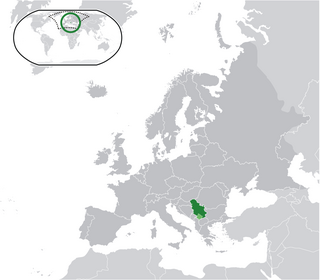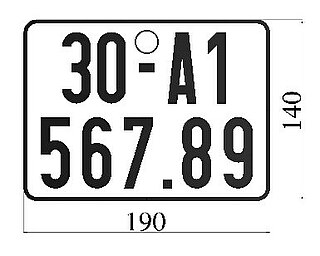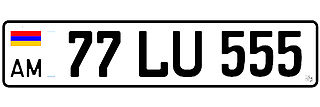Related Research Articles

The North American Numbering Plan (NANP) is a telephone numbering plan for twenty-five regions in twenty countries, primarily in North America and the Caribbean. This group is historically known as World Zone 1 and has the telephone country code 1. Some North American countries, most notably Mexico, do not participate with the NANP.
A telephone numbering plan is a type of numbering scheme used in telecommunication to assign telephone numbers to subscriber telephones or other telephony endpoints. Telephone numbers are the addresses of participants in a telephone network, reachable by a system of destination code routing. Telephone numbering plans are defined in each of the administrative regions of the public switched telephone network (PSTN) and in private telephone networks.
E.123 is an international standard by the standardization union (ITU-T), entitled Notation for national and international telephone numbers, e-mail addresses and web addresses. It provides guidelines for the presentation of telephone numbers, email addresses, and web addresses in print, on letterheads, and similar purposes.
In Argentina, area codes are two, three, or four digits long. Local customer numbers are six to eight digits long. The total number of digits is ten, for example, phone number (11) 1234-5678 for Buenos Aires is made up of a 2-digit area code number and an 8-digit subscriber's number, while (383) 123-4567 would be an example of a Catamarca number.

Telephone numbers in Singapore, also known as the National Numbering Plan, are regulated by the Info-communications Media Development Authority (IMDA). Due to the small geographical size of Singapore, there are no area or trunk codes; all numbers belong to one numbering area, and thus come in the same 8-digit format. Numbers are categorised based on the first digit, thus providing ten possible categories, of which six are currently in use and the remaining four reserved for future usage.
Area code 246 is the telephone area code in the North American Numbering Plan (NANP) for Barbados. The sequence 246 spells BIM on an alpha-numeric telephone keypad, a nickname for the island.

The country calling code of Bangladesh is +880.

Regulation of the telephone numbers in Serbia is under the responsibility of the Regulatory Agency of Electronic Communication and Mail Services (RATEL), independent regulatory authority. The country calling code of Serbia is +381. The country has an open telephone numbering plan, with most numbers consisting of a 2- or 3-digit calling code and a 6-7 digits of customer number.
The Brazilian telephone numbering plan uses a two-digit area code plus eight-digit local phone numbers for landlines and nine digits for mobile lines. Public utility services use short phone numbers, always starting with 1.
Standard Bulgarian vehicle registration plates display black glyphs on a white background, together with – on the left-hand side of the plate – a blue vertical "EU strip" showing the flag of Europe and, below it, the country code for Bulgaria: BG.
Telephone numbers in Canada follow the fixed-length format of the North American Numbering Plan (NANP) of a three-digit area code, a three-digit central office code, and a four-digit station or line code. This is represented as NPA NXX XXXX.
The following telephone numbers in Kenya are destination codes for international calls terminating in Kenya as well as the procedures for dialling internationally from within Kenya. Until 1999, Kenya shared its telephone numbering plan with Tanzania and Uganda, meaning that to make calls between the three countries, subscribers needed only dial the area code and number, a legacy of the East African Post and Telecommunications Corporation (EAPTC) which was dissolved in 1977. As a result of the reorganisation of Tanzania's numbering plan in that year, direct dialling was discontinued, although calls between the three countries do not require international dialling, only a special three-digit code.
National conventions for writing telephone numbers vary by country. The International Telecommunication Union (ITU) publishes a recommendation entitled Notation for national and international telephone numbers, e-mail addresses and Web addresses. Recommendation E.123 specifies the format of telephone numbers assigned to telephones and similar communication endpoints in national telephone numbering plans.

A telephone number is a sequence of digits assigned to a landline telephone subscriber station connected to a telephone line or to a wireless electronic telephony device, such as a radio telephone or a mobile telephone, or to other devices for data transmission via the public switched telephone network (PSTN) or other public and private networks.

Vehicle registration plates of Vietnam generally take the form DDL-DDDDD for vehicles. Standard license plates have black characters on white background. Front plates measure 47 × 11 cm, rear ones are 27 × 20. In 2020 and 2021, both plates measure 6 x 12. The current scheme for civilian vehicles omits the letters I, J, O, Q and W, with the letter R reserved for trailers, and includes the Vietnamese D.

Vehicle registration plates of Armenia have black characters on a rectangular white background. They are composed of two or three numbers, two letters in the middle, and two other numbers. At the left side is located the international code "AM" with an oval car plaque and, sometimes, the national flag. Starting from 6 August 2014 a new design of license plates was implemented. The license plates have a national flag on the left side, a security hologram and a machinery readable Data Matrix Code.
References
- ↑ "New country, new number: Country code 211 officially assigned to South Sudan" (Press release). International Telecommunication Union. 14 July 2011. Archived from the original on 5 October 2011. Retrieved 26 July 2011.
- ↑ "South Sudan Code +211 Goes Live". Gurtong. 3 October 2011. Retrieved 8 January 2012.
- ↑ International Telecommunication Union (28 April 2012). "National Numbering Plans : South Sudan" . Retrieved 18 July 2012.
- ↑ "How to Call South Sudan from South Sudan". How to call abroad. Retrieved 20 October 2016.
- ↑ "South Sudan Mobile Code". Country Calling Codes. Retrieved 20 October 2016.
- ↑ "How to call South Sudan". How to call abroad. Retrieved 20 October 2016.